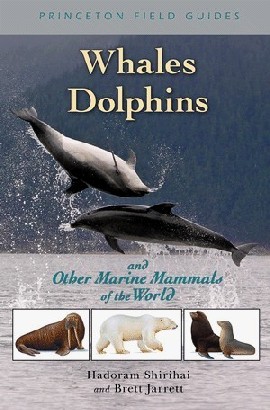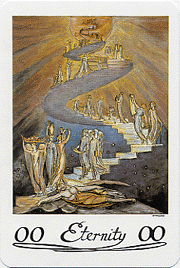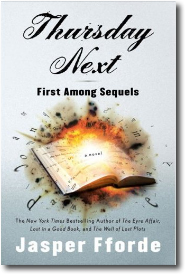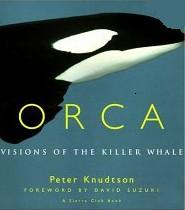Completed as much as I can take of the anecdotes of horror in
How Doctors Think
by Jerome E. Groopman.
This book is about misdiagnosis.
As opposed to "The Checklist" by Atual Gawande in The New Yorker
of 10 December 2007:
"If a new drug were as effective at saving lives
as Peter Pronovost's checklist,
there would be a nationwide marketing campaign urging doctors to use it."
His list to avoid infections when inserting a "line" require that the doctor should:
- wash hands with soap.
- clean the patient's skin with chlorhexidine antiseptic.
- put sterile drapes over the entire patient.
- wear a sterile mask, hat, gown, and gloves.
- put a sterile dressing over the catheter site once the line is in.
By doing this at Johns Hopkins Hospital (Gawande reports)
"the ten-day line-infection rate went from eleven percent to zero.
...for fifteen months
...
in this one hospital,
the checklist had prevented forty-three infections and eight deaths,
and saved two million dollars in costs."
|
Meanwhile, back at Groopman's book:
"The perfect is the enemy of the good."
Attributed to Dr. Terry Light.
[p. 173 of hardback first edition.]
|
Groopman differentiates it from 'medical mistakes' such as
'prescribing the wrong dose of a drug or looking at the x-ray of a patient backward'.
As he says, misdiagnosis is not that straight forward. Rather:
It is a window into the medical mind.
It reveals why doctors fail to question their assumptions, why their thinking is sometimes closed or skewed,
why they have gaps in their knowledge.
...
In one study [no citation] of misdiagnoses that account for serious harm to patients,
some 80 percent could be accounted for by a cascade of cognitive errors, like
...
putting [a patient] into a narrow frame and ignoring information that contradicts
a fixed notion.
Another study [no citation; may refer to a 2005 article by Mark Graber] of one hundred incorrect diagnoses found that
inadequate medical knowledge was the reason for error in only four instances.
...
As many as 15 percent of all diagnoses are inaccurate, according to a 1995 report [no citation]
in which doctors assessed written descriptions of patients' symptoms and
examined actors simulating patients with various diseases.
These findings match classical research [no citation],
based on autopsies,
which shows that 10 percent to 15 percent of all diagnoses are wrong.
[p. 24 of hardback first edition.]
|
Groopman's book essentially says that in order to perform,
doctors employ pattern matching and heuristics (shortcuts),
which help them function particularly when under time and emotional pressure.
However, the snap into one of those patterns has often prevented
a doctor from (a) listening to the patient,
(b) understanding what the patient experiences,
and
(c) making the correct diagnosis.
For that reason, specialists and second opinions are often valuable.
Likewise,
a patient is wise to recognition of when a doctor fails to listen and
to change that doctor.
On Friday, April 13, 2007, Groopman blooged:
"I am in favor of improving the system primarily by honing the
individual doctor's skills and my peer argues standardization of the medical
process."
While Groopman is What I have not seen in Groopman is numbers: how many diagnoses are made correctly by
a standardized medical process?
And how many iatrogenic illnesses are caused by failure to follow the
directions, such as for correctly inserting an I.V?
It would be an error to proclaim that such patterns should not be developed and used, however.
As Groopman writes:
In most cases, a physician arrives at the correct diagnosis and offers
appropriate treatments.
[p. 260 of hardback first edition.]
|
Groopman encourages patients to look for doctors that:
- Use open-ended (rather than closed-ended) questions to move to all but the most
obvious of diagnoses.
- Acknowledge and respond to the patients' emotions.
- "recognize and remember their mistakes and misjudgments, and incorporate
those memories into their thinking. ... expertise is largely acquired not only
by sustained practice but by receiving feedback that helps you
understand your technical errors and misguided documentation."
- Avoid the "commission bias" of acting when no action is needed.
- Avoid premature "search satisfaction" (stopping searching for a diagnosis once
they have identified one).
- Avoid "vertical-line thinking" (thinking 'inside the box').
Among the questions that Groopman encourages us to ask as patients
to help our doctors reach the correct diagnosis
(especially as in his "Epilogue: A Patient's Questions"):
- Can I tell you how it felt, how it happened, and when it happened?
Telling the story afresh can help you recall a vital bit of information that you forgot.
Telling the story again may help the physician register some clue that was, in fact,
said the first time but was overlooked or thought unimportant.
This will [?might?] prompt him to look in new directions for answers.
[p. 261 of hardback first edition.]
|
- Can I tell you what I am the most afraid this is?
- What is the worst thing this could be? [p. 75]
- What else could it be?
- Is there anything that does not fit?
This especially applies to a diagnosis characterized as 'atypical'.
- Is it possible that I have more than one problem?
- Should some tests be repeated?
- What other specialists should I see?
 Links.
Links.
 Booker Prizes
Booker Prizes
 Books read
Books read
 Best books read in 2007.
Best books read in 2007.
 Best writers of poetry and prose
Best writers of poetry and prose
 Harry Potter;
also
Harry Potter en Español.
Harry Potter;
also
Harry Potter en Español.
 New books on Christianity and Spirituality
New books on Christianity and Spirituality


 Why read a book?
Why read a book?
 .
.
 The Mental Health of George W. Bush
The Mental Health of George W. Bush







